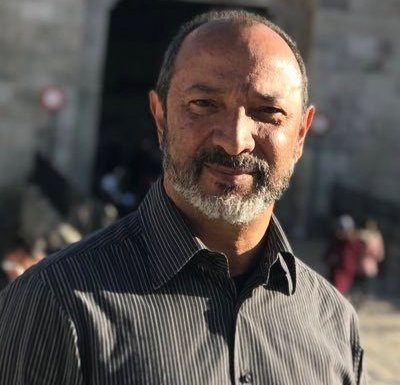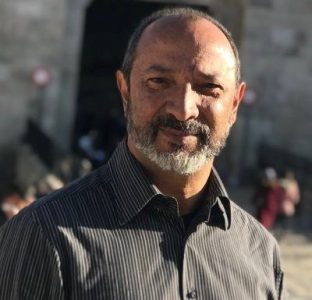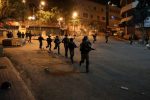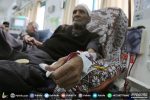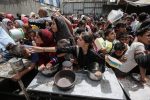The occupied West Bank is on the verge of a major upheaval. The event most feared by the Zionist regime may be about to happen, due to the increasing number and effectiveness of actions by the Palestinian resistance. The third intifada — uprising — is in its gestation period, and if and when it breaks out it will become a crucial front alongside Gaza and the northern border of the occupation state. The Zionist occupation forces will find it very difficult to face, and even harder to overcome.
This will present a complex battlefront that Israel’s occupation army will have to deal with, and it is known that the Zionist entity does not have the military capabilities to face an urban guerrilla war against Palestinian resistance fighters. They are characterized by boldness, determination and organization, as well as operational development that can paralyze the enemy. The recent actions in the neighborhood of Gush Etzion, in the heart of Tel Aviv, in Hebron, Jenin and Nablus are examples of this.
Intifada is an Arabic word that literally means “revolt” and is used to describe the popular insurgency movement against the Israeli occupation, which has been reaffirmed as illegal by the International Court of Justice. The First Intifada broke out in Gaza on 8 December, 1987, and spread rapidly throughout the occupied Palestinian territories until 13 September, 1993. It became known as the “Stone Intifada” because one of the most powerful armies in the world had been challenged by children and young people with stones.
One image that ran across the world showed a Palestinian child facing up to a Zionist tank with stones in his hands.
The Second, or Al-Aqsa, Intifada exploded on 28 September, 2000, in the light of frustration with the developments of the Oslo Accords, signed between Israel and the Palestine Liberation Organization, as well as the Zionist regime’s ongoing repressive and bellicose policies. The fuse was lit by Ariel Sharon who entered Al-Aqsa Mosque compound surrounded by a strong security detail. More than a thousand Palestinians present at the time viewed this as an unacceptable provocation. This intifada lasted until 8 February, 2005.
The issue of a third intifada has been raised amid escalating tensions between Israel and Palestinian resistance in recent years, with periodic waves of violence and resistance, growing political polarization within the Zionist camp, as well as the weakening of the Palestinian Authority in the occupied West Bank.
While there has not yet been a formal declaration of a third intifada, some elements suggest that a new phase of the conflict is emerging. Increasing violence by the occupation forces in the West Bank, both regular troops and armed, fascist settlers, has intensified in various parts of Israel and the occupied territories. The resistance groups in the West Bank are responding to this violence to protect their families, their homes and their land. Will the Zionist regime be able to stop them?
If another intifada does break out, Israel will face major challenges in trying to contain it. The Palestinian resistance movement has undergone significant transformations since the first two uprisings. Technology and social media have enabled faster and more comprehensive mobilization, which can make the movement less centralized and more difficult to contain. The movement has diversified, adopting tactics that allow fighters to operate in a decentralized way, making things more difficult for apartheid Israel.
It is likely that the Zionist state will discover that armed repression, arrests and assassinations will not be enough to stop a movement that involves both popular resistance and armed struggle. The resistance exists because of the illegal occupation, and is rooted in the legitimate struggle for Palestinian rights and self-determination.
The outbreak of an intifada in the West Bank will lead to the worsening of a situation in which Israel will fail to achieve the total victory promised by Prime Minister Benjamin Netanyahu, who is fighting for his political life. He has neither driven Hamas out of Gaza nor recovered the Israeli hostages. On the contrary, he has faced military, political and moral defeat in Gaza; the loss of the north of 1948-occupied Palestine and the destruction of its military bases; and the mass evacuation of Jewish settlers along the border zone.
The Zionist leaders know that there is no hope of absolute victory in Gaza.
And the situation is becoming worse in the north, where the Israeli army is seeing its military capabilities degraded with the destruction of surveillance equipment and numerous batteries of the Iron Dome air defense system.
Israel’s genocidal war against the Palestinian people in the Gaza Strip has failed and will not be able to achieve any of its aggressive goals, especially that of annihilating legitimate Palestinian resistance to the illegal occupation of Palestinian land. The actions of the occupation state in the West Bank, from the destruction of infrastructure to the killing and arrest of Palestinians men, women and children, will not stop the liberation of Palestine “from the river to the sea”.
-Sayid Marcos Tenório is a historian and specialist in international relations. He is vice president of the Brazil-Palestine Institute (Ibraspal) and author of the book Palestina: do mito da terra prometida à terra da resistência (Palestine: the myth of the promised land to the land of resistance). His article appeared in MEMO.

